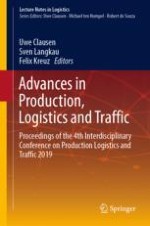The series of Interdisciplinary Conferences on Production, Logistics and Traffic (ICPLT) address the research community as well as practitioners in these fields with special attention to links and interfaces between the three disciplines. The fourth ICPLT in particular deals with technology from intralogistics to automated trucking driving as well as the societal aspects of commercial transport.
To contribute to a high-level and beneficial exchange between authorities in politics and municipalities with researchers and practitioners in production and logistics management the ICPLT has asked for contributions from the three disciplines to better understand innovative technologies, best practises and latest results. These contributions have been evaluated and selected based on a double-blind review process to become part of this book. It comprises 21 contributions examining trends and challenges for commercial transport as the essential link for production, logistics and society. Therefore, innovative technologies and strategies are presented and discussed to better understand the interdependencies, conflicts of interest and to develop feasible solutions.
Topics
· Simulation & Optimization in Production and Logistics
· Freight Transport Demand Modelling
· Intralogistics & Logistics Facilities
· Policy & Human Factors
· Production & Maintenance
· Supply Chain Management
· Sustainable Logistics & Energy
Target Groups
· Representatives of public authorities, municipalities & politics
· Actors of sectoral, transport & spatial planning
· Actors of production & logistics
· Researchers in the disciplines production, logistics, transport & spatial planning
